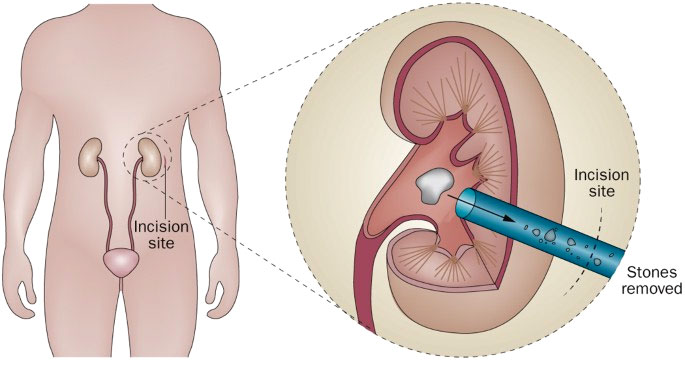

Ureterolithotomy is a surgical procedure performed to remove large, impacted, or complex stones (calculi) from the ureter when other less invasive treatments, such as URS (Ureteroscopy), RIRS (Retrograde Intrarenal Surgery), or ESWL (Extracorporeal Shock Wave Lithotripsy), have failed or are not feasible. It involves making an incision in the ureter to directly extract the stone and restore normal urinary flow.
Indications for Ureterolithotomy
- Large or Impacted Ureteral Stones: Stones too large to pass or remove using minimally invasive techniques.
- Severe Ureteral Obstruction: Causing hydronephrosis (swelling of the kidney) or impaired kidney function.
- Infected Ureteral Stones: Associated with recurrent urinary tract infections (UTIs).
How is Ureterolithotomy Performed?
- Preoperative Evaluation: Blood and urine tests to check for infection or other abnormalities.
- Anesthesia: Performed under general anesthesia.
Benefits of Ureterolithotomy
- Effective Removal of Large or Complex Stones
- Restores Normal Urine Flow
- Minimally Invasive Options Available
- Prevents Recurrence of Ureteral Obstruction
Ureterolithotomy is a reliable and effective procedure for removing large or impacted ureteral stones when other treatment methods are unsuccessful. With the availability of laparoscopic and robotic-assisted techniques, patients benefit from faster recovery, minimal pain, and improved post-operative outcomes.